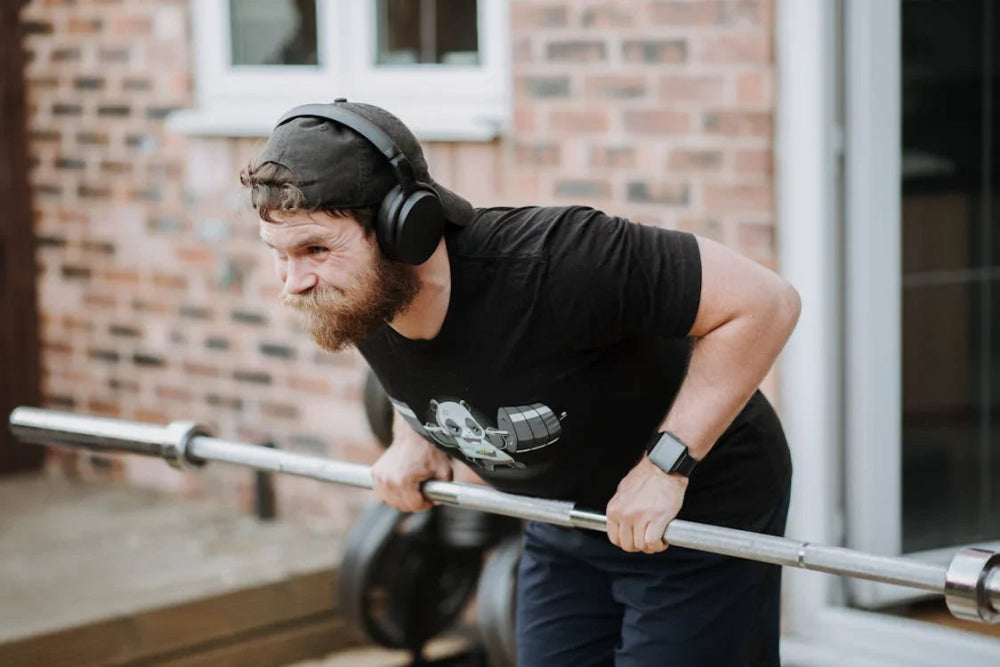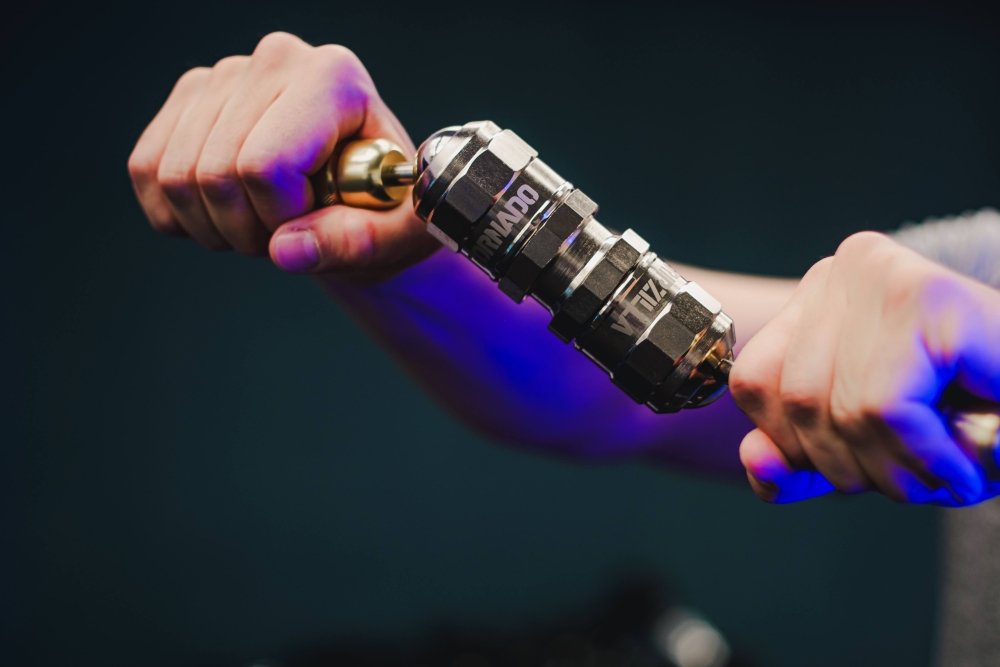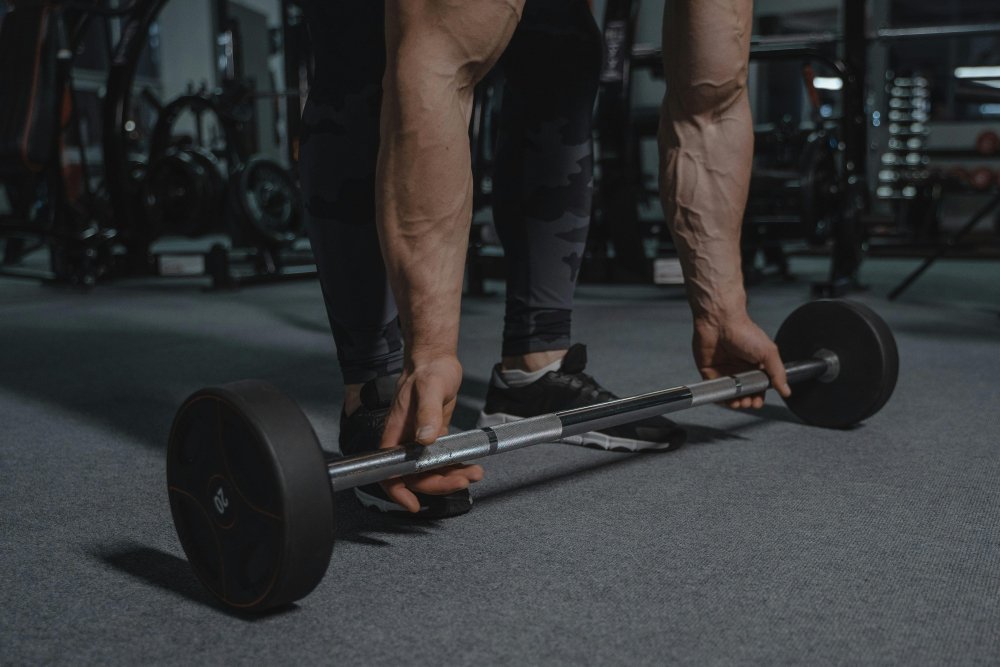If you’re looking for real arm growth, not just temporary pumps, German Volume Training (GVT) might be the most effective, efficient, and painful way to get there.
GVT isn’t new. It’s been a staple in serious bodybuilding for decades.
And when paired with grip training tools like the Dynamo and Tornado, you’re not just building size, you’re reinforcing the foundation of raw strength.
Unsure of how GVT works, how to execute it properly, and how to integrate grip-specific work to eliminate weak links in your arm training?
Let’s find out:
Why German Volume Training Works for Arms?
 If your arms aren’t growing, you’re probably not hitting them with enough volume and intensity. This is where GVT comes in.
If your arms aren’t growing, you’re probably not hitting them with enough volume and intensity. This is where GVT comes in.
The 10x10 Training Method Explained
· 10 sets of 10 reps using 60% of your 1-rep max (1RM).
· Strict 60-90 second rest periods (no cheating this).
· Slow eccentric (lowering) phase for more time under tension.
· Same weight across all sets (no ego lifting, just relentless workload).
GVT is all about overload through volume. You force your muscles to adapt by pushing through fatigue with high-set training.
This kind of stress triggers hypertrophy (muscle growth) faster than lower-volume training.
Why It’s Brutal & Effective
· Your arms will burn out early, forcing secondary muscle recruitment.
· Forearms, grip, and stabilizers get destroyed along with your biceps/triceps.
· Central nervous system (CNS) fatigue builds up fast, so recovery is key.
This is NOT for beginners. If you haven’t trained consistently for at least 6-12 months, you won’t have the muscular endurance to handle it.
How German Volume Training Works?
 The Weight | 60% of Your 1RM (No Ego Lifting)
The Weight | 60% of Your 1RM (No Ego Lifting)
You’ll want to start lighter than you think. If your 1-rep max on barbell curls is 100 lbs, you’ll use 60 lbs for all 10 sets.
The first few sets will feel easy. By set 6-7, your arms will be shaking.
The Rest Period | 60-90 Seconds (Don’t Cheat It)
The short rest times are what make GVT so brutal. This is not a “lift heavy, rest 3 minutes” type of workout.
Your muscles stay under constant fatigue, forcing them to adapt.
The Tempo: Controlled & Consistent
4-0-2 tempo:
· Lower the weight in 4 seconds (eccentric).
· No pause at the bottom.
· Lift explosively in 2 seconds.
This increases time under tension, maximizing muscle fiber recruitment.
The Best German Volume Training Workout for Arms
 This isn’t a “throw random exercises together” routine.
This isn’t a “throw random exercises together” routine.
Every movement here is chosen to target the biceps, triceps, and forearms without overlap.
Triceps Assault
1. Close-Grip Bench Press – 10x10
· Keeps tension on triceps while allowing heavy loading.
· Helps improve lockout strength on presses.
2. Dips (Weighted if possible) – 10x10
· Full triceps engagement with added shoulder stability benefits.
· If bodyweight dips are too easy, add weight.
3. Gripzilla Dynamo Wrist Roller – 4x12
· Hits the forearms, wrists, and grip endurance, which is critical for pressing strength.
· Forces stabilization and builds wrist control under fatigue.
Biceps Demolition
 1. Barbell Curls – 10x10
1. Barbell Curls – 10x10
· Maximum load capacity for direct biceps overload.
· Keeps both arms under the same tension. No imbalances.
2. Hammer Curls – 10x10
· Targets the brachialis for more arm thickness.
· Also improves grip strength, which carries over to heavier pulling movements.
3. Gripzilla Tornado Grip Trainer – 3x30 sec
· Builds rotational grip strength, an often neglected aspect of arm training.
· It uses real-world grip challenges, which are critical for combat sports, climbing, and strongman training.
Why Forearm & Grip Strength Matter for Bigger Arms
 Too many lifters ignore their forearms, until their grip fails mid-set.
Too many lifters ignore their forearms, until their grip fails mid-set.
Weak forearms limit how much weight you can lift, robbing your biceps and triceps of growth.
· If your grip gives out first, your biceps and triceps don’t get pushed to failure.
· Bigger forearms add thickness to your arms without extra bulk.
· Grip endurance keeps tension high, helping with high-rep GVT sets.
Using Dynamo and Tornado as part of your arm day fixes weak grip issues while adding extra forearm volume without eating into your main lifts.
Common Mistakes in German Volume Training for Arms
1. Picking the Wrong Weight
· If you can’t get all 10 reps on set 3, you went too heavy.
· If you aren’t struggling by set 7, you went too light.
2. Rushing Rest Periods
· 60 seconds means 60 seconds, not 30 seconds just because you feel ready.
· Your muscles need time to recover, but not fully.
3. Ignoring Grip & Forearm Work
· Weak hands = weak lifts.
· Your biceps & triceps can handle more load when your grip is strong.
· Dynamo & Tornado reinforce wrist and grip stability.
4. Skipping Recovery
· 10x10 is brutal, you can’t train arms like this every day.
· Sleep, nutrition, and active recovery matter just as much as the workout itself.
How to Integrate Dynamo & Tornado for Next-Level Gains
Gripzilla Dynamo (Wrist Roller) = Forearm Endurance & Strength
· Perfect finisher for arm day.
· Builds grip endurance, crucial for longer sets of GVT.
· Helps with wrist stability, reducing injury risk on pressing movements.
Gripzilla Tornado (Rotational Grip Trainer) = Explosive Wrist & Grip Strength
· Forces dynamic grip engagement, using real-world strength demands.
· Bridges the gap between grip, wrist, and forearm power.
· Ideal for fighters, climbers, strongman athletes, and powerlifters.
Conclusion
GVT isn’t easy. If you want bigger arms, 10x10 is the real deal.
It forces your muscles to adapt under extreme fatigue, and when combined with Dynamo & Tornado, it fills in the gaps that most lifters overlook.
Stick to this plan, track your progress, and don’t quit when it gets brutal because that’s where the real growth happens.



